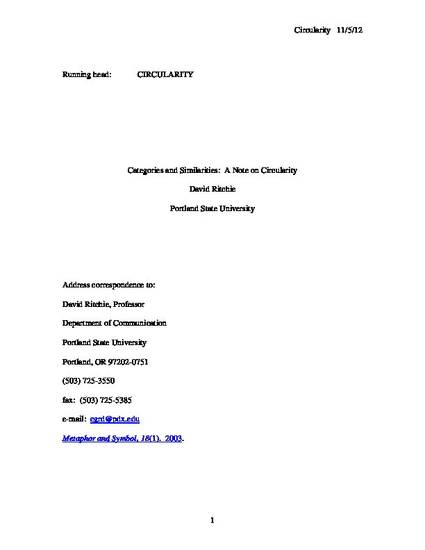
- Grammar (Comparative and general),
- Grammatical categories,
- Metaphor
Theories of metaphor comprehension that rely on category assignment based on common characteristics (Keysar & Glucksberg, 1992), a comparison between characteristics or relationships of source and target (Chiappe & Kennedy, 2001), or a mapping of characteristics or relationships from source to target (Gentner & Bowdle, 2001) are inherently circular, since these comparisons, mappings, or categories usually make sense only after the underlying metaphor has already been understood. This inherent circularity is avoided by approaches such as conceptual metaphor theory (Lakoff & Johnson, 1980) and conceptual blending theory (Fauconnier & Turner, 1998) that seek to explain metaphors in terms of underlying cognitive concepts or schemas.
Copyright © 2003, Lawrence Erlbaum Associates, Inc.

NOTICE: this is the author’s version of a work that was accepted for publication in Metaphor and Symbol. Changes resulting from the publishing process, such as peer review, editing, corrections, structural formatting, and other quality control mechanisms may not be reflected in this document. Changes may have been made to this work since it was submitted for publication. A definitive version was subsequently published in Metaphor and Symbol, 18(1), 2003, 49-53.